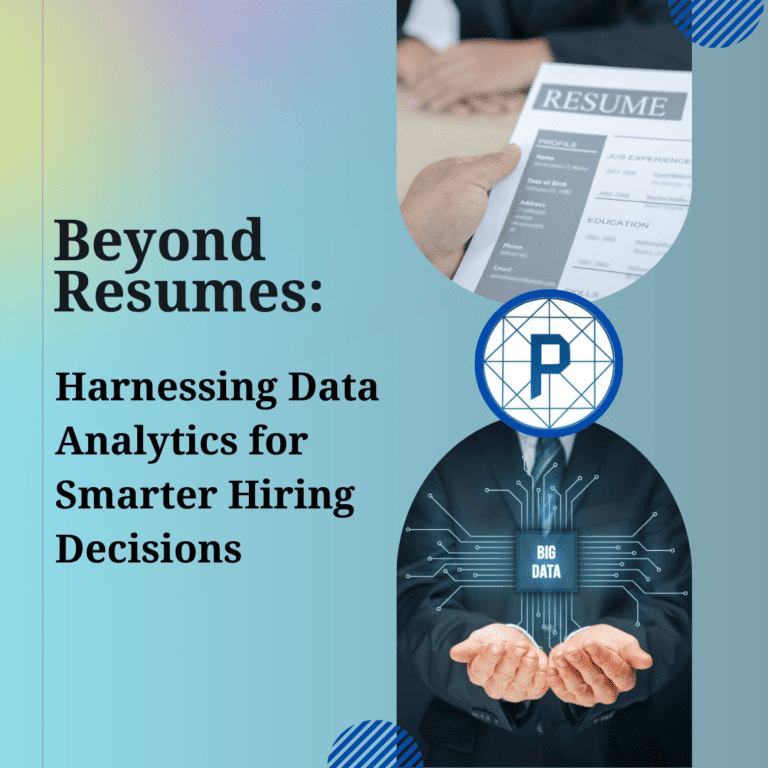
In the modern landscape of talent acquisition, traditional hiring methods are increasingly proving inadequate in identifying the best candidates for the job. Resumes, long regarded as the primary tool for evaluating candidates, offer only a superficial glimpse into an individual’s skills and potential.
As organizations strive to make more informed hiring decisions, they are turning to data analytics to uncover deeper insights into candidates’ qualifications, preferences, and cultural fit. By leveraging data analytics tools and techniques, companies can revolutionize their hiring processes, transcending the limitations of resumes and paving the way for smarter hiring decisions and enhanced organizational performance.
The Limitations of Traditional Hiring Practices
For decades, resumes have served as the cornerstone of the hiring process. However, resumes have inherent limitations that hinder their effectiveness in identifying top talent. Primarily, resumes rely on self-reported information, leaving room for exaggeration or distortion of facts. Furthermore, resumes often fail to capture intangible qualities such as soft skills, personality traits, and potential for growth.
Moreover, the sheer volume of resumes received for each job posting can overwhelm hiring managers, leading to inefficiencies in the hiring process. Sorting through countless resumes to identify qualified candidates consumes valuable time and resources, often resulting in delayed hiring decisions and missed opportunities to secure top talent.
The Emergence of Data Analytics in Hiring
Recognizing the shortcomings of traditional hiring methods, organizations are increasingly turning to data analytics to augment their hiring processes. Data analytics encompasses a range of statistical techniques, machine learning algorithms, and analytical tools that extract actionable insights from large datasets. When applied to hiring, data analytics enables organizations to gain a more comprehensive understanding of candidates’ qualifications and suitability for a given role.
One of the primary advantages of data analytics in hiring is its ability to uncover hidden patterns and correlations within candidate data. By analyzing historical hiring data and correlating it with performance metrics, organizations can identify the attributes and characteristics that are most predictive of success in specific roles.
Leveraging Data Throughout the Hiring Lifecycle
Data analytics can be applied at various stages of the hiring lifecycle to optimize decision-making and improve outcomes:
1. Candidate Sourcing:
- Keyword Analysis: Analyzing job descriptions and candidate profiles using natural language processing techniques to identify relevant keywords and phrases.
- Talent Pool Segmentation: Segmenting candidate pools based on criteria such as skills, experience, and location to target recruitment efforts more effectively.
2. Candidate Screening:
- Resume Parsing: Employing machine learning algorithms to extract pertinent information from resumes automatically.
- Predictive Modeling: Developing models to predict candidate success based on historical hiring data and candidate attributes.
3. Candidate Assessment:
- Skills Testing: Administering online assessments and simulations to evaluate candidates’ technical proficiency and problem-solving abilities.
- Personality Assessment: Utilizing psychometric assessments to gauge candidates’ personality traits and cultural fit.
4. Decision Making:
- Scorecarding: Developing standardized evaluation criteria to streamline the candidate evaluation process.
- Algorithmic Decision Support: Using algorithms to rank and prioritize candidates based on their fit with the role and organization.
Challenges and Considerations
While data analytics holds tremendous potential for enhancing hiring decisions, organizations must navigate several challenges and considerations:
- Data Privacy: Organizations must adhere to data privacy regulations and ethical guidelines when collecting and analyzing candidate data to ensure compliance and protect candidate privacy.
- Bias Mitigation: Data analytics algorithms may inadvertently perpetuate biases present in historical data. Organizations must implement measures to mitigate bias and ensure fair and equitable hiring practices.
- Skill Requirements: Implementing data analytics in hiring requires specialized skills and expertise in data science, statistics, and machine learning. Organizations may need to invest in training or hire external experts to support their efforts.
Conclusion
In an era characterized by fierce competition for top talent, organizations must embrace innovative approaches to hiring. By harnessing the power of data analytics, organizations can unlock valuable insights into candidates’ qualifications, preferences, and potential, enabling them to make more informed hiring decisions. Beyond resumes, data analytics offers a pathway to more efficient, effective, and equitable hiring processes, ultimately empowering organizations to build high-performing teams that drive success in today’s dynamic business landscape.
